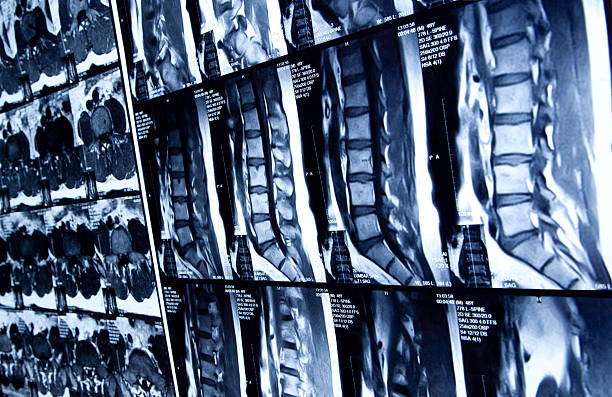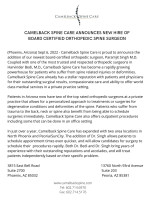Your spine is a complex structure of small bones (vertebrae), cushioning discs, nerves, joints, ligaments and muscles. This part of your anatomy is susceptible to injury, arthritis, herniated disks, and other complex problems. Back and neck pain can affect your ability to enjoy your life the way you deserve. Here at Camelback Spine Care, we can help ease back pain and offer suggestions to strengthen the muscles that support your back and prevent back injuries, as well as offer cutting-edge, minimally invasive surgery options and outpatient treatments to get you back to life. Understanding your spine is a helpful way for patients to understand the complexity of the spine as well as its overall symbiotic relationship to overall body.
A healthy spine has three natural curves that make an S-shape. These curves absorb shocks to your body and protect your spine from injury. Many different parts make up your spine: the vertebrae, facet joints, intervertebral discs, spinal cord (and nerves) and soft tissues. The spine has 33 stacked vertebrae (small bones) that form the spinal canal. The spinal canal is a tunnel that houses the spinal cord and nerves, protecting them from injury.
The 33 vertebrae make up five distinct spine segments. Starting at the neck and going down toward your buttocks (rear end), these segments include:
- Cervical (neck):Â The top part of the spine has seven vertebrae (C1 to C7). These neck vertebrae allow you to turn, tilt and nod your head. The cervical spine makes an inward C-shape called a lordotic curve.
- Thoracic (middle back):Â The chest or thoracic part of the spine has 12 vertebrae (T1 to T12). Your ribs attach to the thoracic spine. This section of the spine bends out slightly to make a backward C-shape called the kyphotic curve.
- Lumbar (lower back): Five vertebrae (L1 to L5) make up the lower part of the spine. Your lumbar spine supports the upper parts of the spine. It connects to the pelvis and bears most of your body’s weight, as well as the stress of lifting and carrying items. Many back problems occur in the lumbar spine. The lumbar spine bends inward to create a C-shaped lordotic curve.
- Sacrum: This triangle-shaped bone connects to the hips. The five sacral vertebrae (S1 to S5) fuse as a baby develops in the womb, which means they don’t move. The sacrum and hip bones form a ring called the pelvic girdle.Â
- Coccyx (tailbone):Â Four fused vertebrae make up this small piece of bone found at the bottom of the spine. Pelvic floor muscles and ligaments attach to the coccyx.
Many issues can cause back and neck pain, with up to 80% of Americans experiencing back and neck pain at some point in their lives. Vertebrae and discs can wear down with age, causing pain and chronic discomfort. Some of the conditions that affect spine health and are treated at Camelback Spine Care are:
- Arthritic conditions
- Back pain and strainsÂ
- Birth defects such as spina bifida.Â
- Bone spurs (jagged edges on vertebrae that put pressure on the spinal cord and nerves).
- Curvatures of the spine (scoliosis and kyphosis)
- Neuromuscular diseases
- Nerve injuries, including spinal stenosis , sciatica  and pinched nerves .
- Osteoporosis Â
- Spinal cord injuries, including fractures, herniated discs and paralysis .
- Spinal tumors and cancer.
- Spine infections like meningitis  and osteomyelitis .




.jpg)

.jpg)